One of the first things that cross the mind of a new pool owner is how do I clean my pool? Fortunately, cleaning an inground pool is not a difficult process, although it can be quite daunting and time-consuming, at least at first.
But in order to keep your pool clean, pool care is something that new pool owners need to learn. Once you get into a good routine you will be able to vacuum the pool efficiently to keep the pool clean.
The most common way to clean inground pools is to use a manual vacuum attached to the skimmer which will suck up any dirt and debris from the pool floor and trap it in the filter.
If you follow my detailed instructions below then you will soon be able to clean your inground pool easily. To be honest, cleaning an above-ground pool with a sand filter is very little different from this.
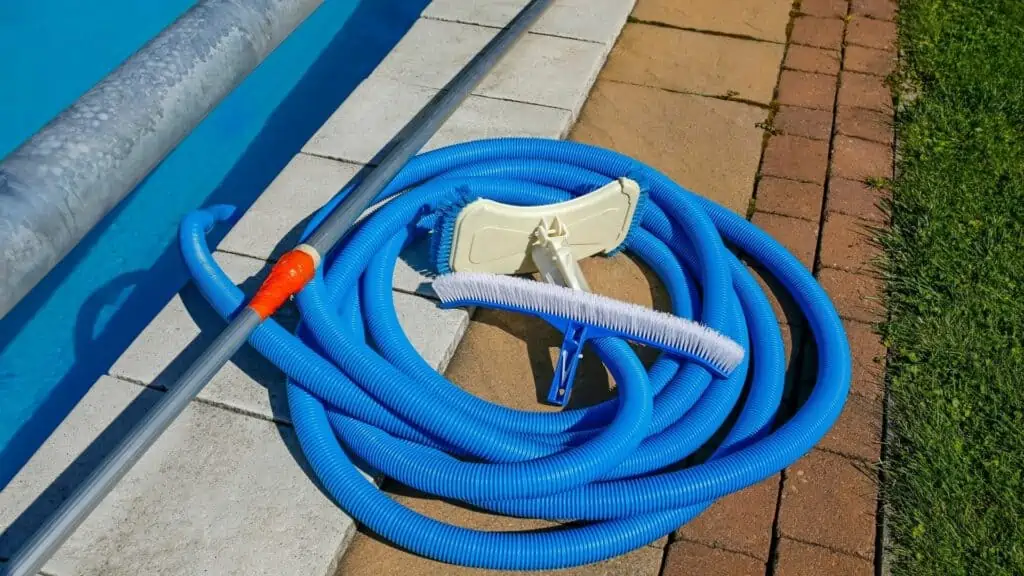

The tools you will need to clean the pool
You do not need many tools to clean a pool with a sand filter.
You only need the following:
Clean a pool with a sand filter – step by step
These steps cover how to clean a pool with a sand filter when the pool is not very dirty using the multiport valve on the filter setting. If your pool is very dirty you will probably need to vacuum on the waste setting. I have a separate post for this giving full instructions – How to vacuum to waste.
Step 1. Brush the pool walls
To ensure any dirt that may be on the pool walls is also cleaned it is good practice to go around the pool and brush the sides with a pool brush to allow any dirt to fall to the bottom. Also, brush any other pool surfaces such as steps or the pool ladders. Ideally, you should do this perhaps an hour before you actually start to vacuum to give the dirt time to settle on the bottom.
Step 2. Use a pool net
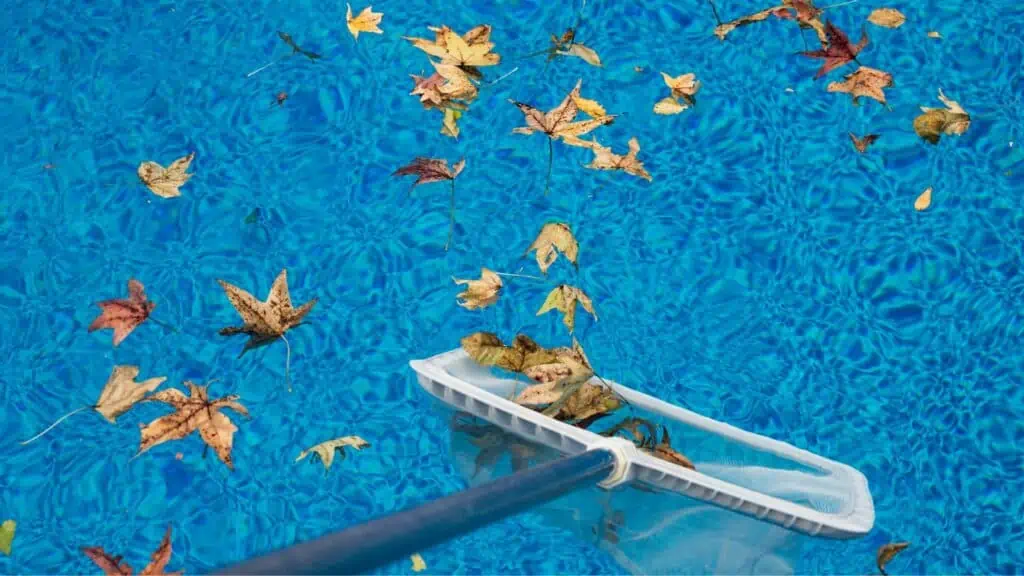
Use a pool net, firstly, remove any floating debris such as leaves from the surface of the pool.
Then using the net carefully pick up as much debris from the bottom of the pool as possible. This includes waterlogged leaves, small stones and other organic matter that may clog up the filter baskets. Small pieces of debris can be left for the vacuum to pick up. Try not to disturb the small particles of dirt too much.
TIP: After brushing and using the skimmer net you should ideally leave the pool for an hour or so to allow any fine dirt to settle. The vacuum will not pick up any that is still floating in the water so you may still end up with some dirt on the bottom the next day if you don’t give it a chance to settle. You may need to skim any additional leaves with the net if any have fallen onto the pool surface in the meantime.
Step 3. Set up the pool vacuum
To do this you should attach your vacuum pole securely to the manual pool vacuum head. Then connect one end of the pool hose to the connection on top of the pool vacuum.
Step 4. Remove air from the hose
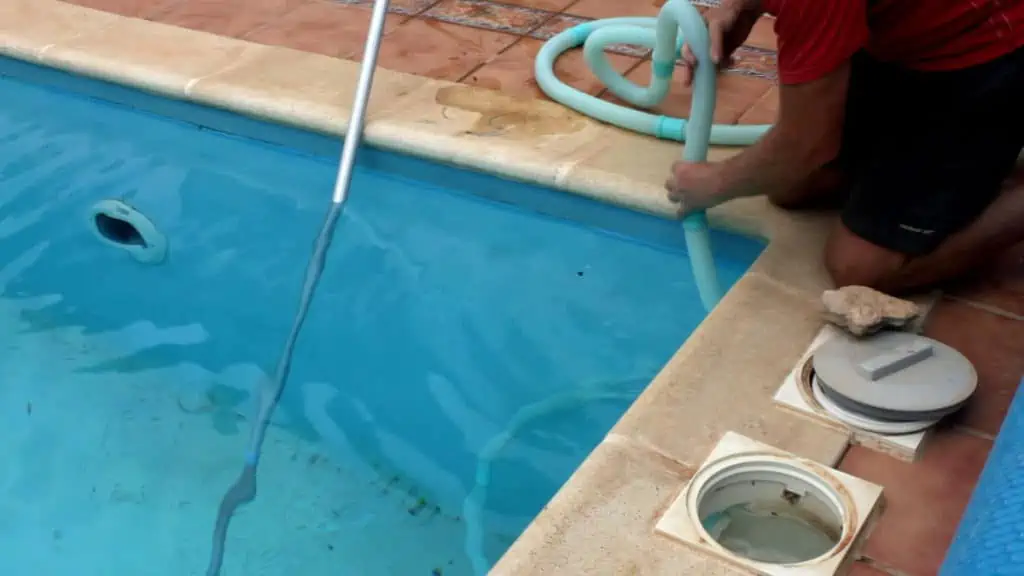
Position the vacuum by the skimmer and lower the vacuum into the pool holding the vacuum pole until it reaches the bottom. Feed the rest of the pool hose hand over hand pushing it straight down into the pool to remove the air until pool water runs out – see How to remove air from the pool hose.
You do this so that when you start the pool pump you are less likely to get an airlock.
Step 5. Connect the hose to the skimmer
If the pool pump is on, switch it off and make sure the filter valve is set to the “Filter” position.
Slip the other end of the hose through the skimmer opening and connect it directly into the inlet at the bottom of the skimmer (after removing the skimmer basket).
Step 6. Switch the pump on
Switch the pool pump back on at the electrical panel. Before you start to vacuum make sure that any air is purged from the system by looking at the see-through lid of the pool pump strainer. Wait until this is full of water.
TIP 1: You may need to increase the amount of suction to the vacuum. You can do this by turning the suction side valves so that the bottom drain and any other skimmers are off. Don’t forget to put them back to their original positions when finished.
TIP 2: If you have more than one skimmer but cannot switch them off individually, you can take a tennis ball and push it down into the other skimmer to block the hole going to the pump. The suction will hold it there.
Note, if you have more than one skimmer, you will notice that one will probably have two open holes at the bottom. Use the one at the back (furthest away from the pool). Read my post – Why are there two holes in a pool skimmer?

Step 7. Start to vacuum
Now vacuum the pool by slowly moving the vacuum through the pool water along the bottom of the pool. You must try to do this as gently as possible to ensure you don’t disturb the dirt on the bottom. Any dirt you do disturb is likely to go into suspension in the water and will settle again later, meaning you may have to vacuum again.
Try to operate in a methodical way. I normally start in one corner. I vacuum along the side in the direction I intend to work and then come back and vacuum from the side to the middle of the pool. I work my way along the pool to the other end and then do the same on the other side of the pool.
Step 8. Turn off the pump and disconnect the hose
Turn off the pump and then remove the hose from the skimmer or suction port. Remove the vacuum from the pool.
Step 9. Backwash the pool filter
If your pool filtration system has a sand filter continue with this section. If you have a cartridge filter system then skip this part as these pool filters do not require backwashing.
If there was little dirt in the pool it may not be necessary to backwash the pool filter. If it is then turn the multiport valve to backwash and then switch the pump on again for a few minutes.
You should be able to see the dirt and debris swirling in the viewing glass as it is expelled (if you have a valve on the outlet line make sure it is open).
When the water starts to run clear you can switch the pump off and put the multiport valve to rinse. Again turn on the pump and run it for about a minute. Then pump off again and return the valve to filter.
For full details on backwashing read my article – How to backwash a pool – a step by step guide
Step 10. Empty the pump strainer basket
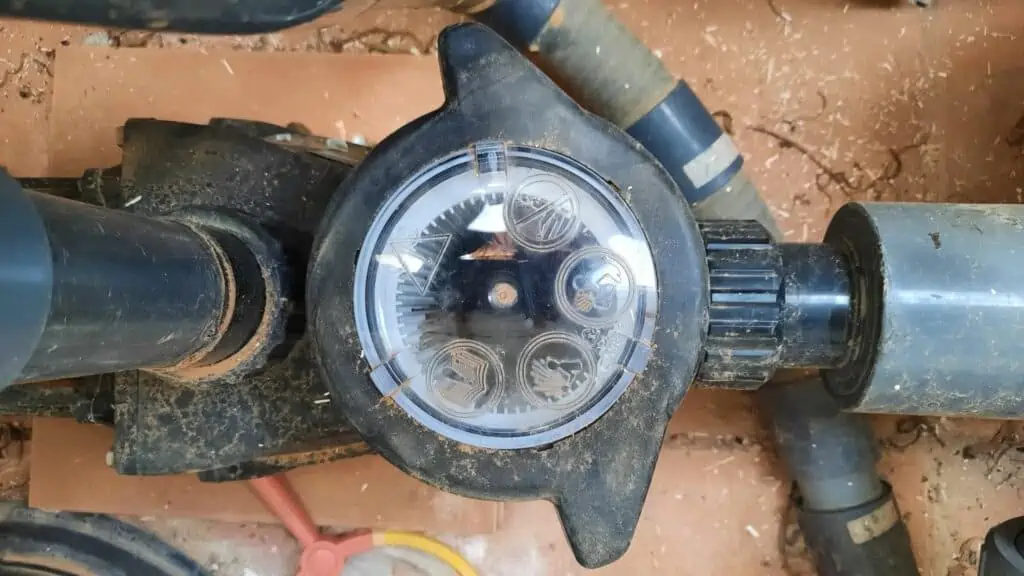
You should be able to see through the clear cover of the pool pump into the strainer basket. If you can see that there are leaves and other debris in there then remove the cover, pull out the basket and empty it before putting it back in and putting the cover back on.
See How to empty a pool pump basket without getting an airlock
Final step. Switch the pump back on – you are finished!
Your pool should now be nice and clean. But before you have a swim and relax, check the pool chemicals are correct using test strips or a test kit and add any chemicals that are necessary.
Best alternative to manually vacuuming
If all of the above sounds too much like hard work then there is a more expensive but simple solution ….. a robotic pool cleaner
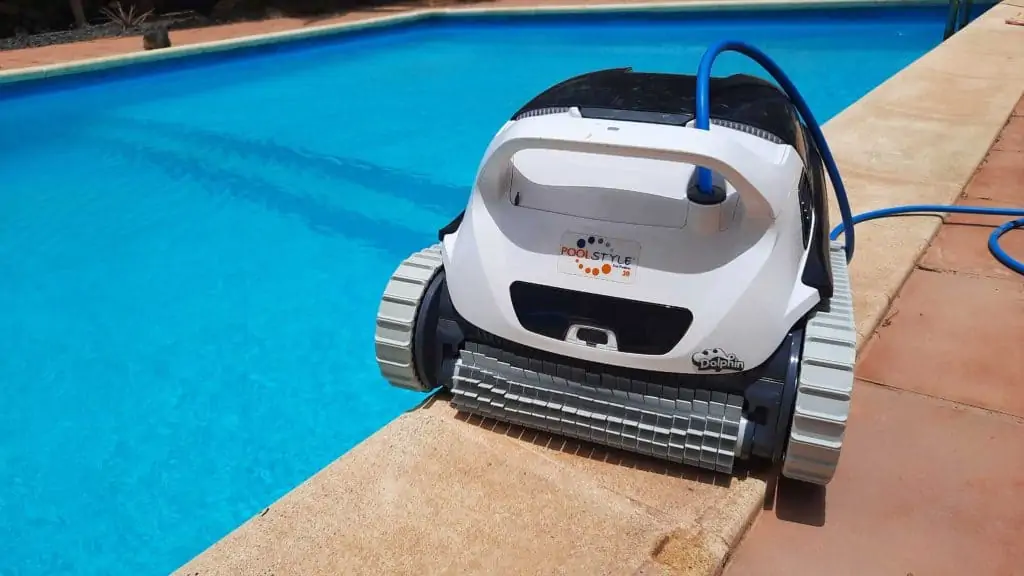
Having bought a robotic pool cleaner myself, I can honestly say that I wish I had bought one much sooner.
I spent almost 7 years manually vacuuming my pool every week. That probably equates to over 500 hours of time pool cleaning that I could have spent doing something more enjoyable. Now I just drop my robot into the pool, switch it on and that’s it.
The most popular model by far is the Dolphin Nautilus CC Plus, which is available on Amazon. It not only cleans the bottom of the pool but also the sides and the waterline.
Other useful pool cleaning articles
You may find my article on what to do when to maintain your pool useful, particularly as it includes a printable swimming pool maintenance guide pdf that you can download.
Another article explains what each of the pool filter valve positions does.
If you are unsure what tools you will need to clean your pool then my guide to the best pool cleaning equipment list may help.
Pool cleaning FAQs
How often should you clean your inground pool?
In general, you will probably need to clean your pool once a week during the swimming season. You may have to do it more frequently if you have some bad weather, if you have trees around your pool or if it is used very frequently.
Is it difficult to maintain a pool?
It is not very difficult to clean a pool. Obviously, you need to learn how best to do it and also how to maintain the chemical levels but it is not something that most people cannot do.
How long should it take to clean a pool?
Once you have worked out a routine for cleaning a pool then the average size backyard pool should take no longer than one hour from start to finish. It may take longer if you have had a heavy storm so there is lots of debris that has blown in the pool.
When I vacuum my pool the dirt comes back in
If dirt flows back into the pool then it may be that your sand filter needs backwashing or your cartridges may need cleaning if you have those. It could also mean that the sand in your filter needs replacing or that there is a broken element in the sand filter.


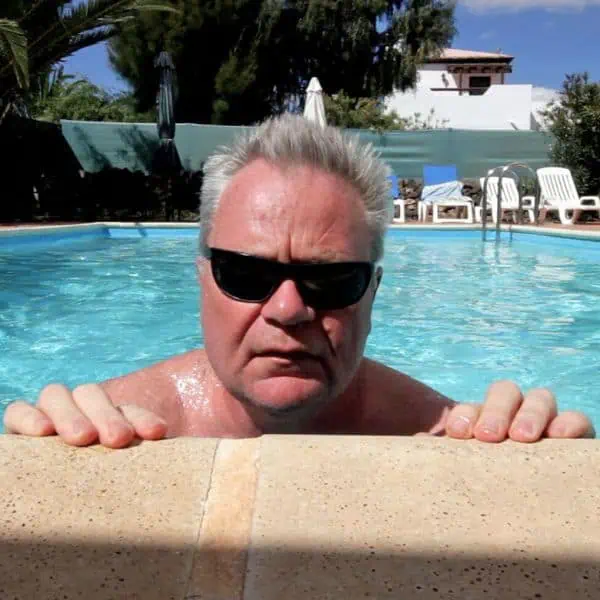



Leave a Reply